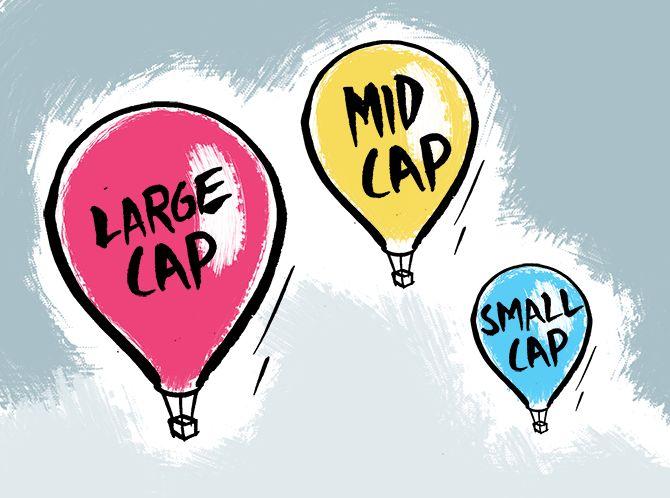Being more financially savvy helps women choose the right balance between consumption spending vs investing for future and can hold them in good stead as life hands out various twists and turns along the way, says Piyush Baranwal, in the second part of the series on how women can achieve their financial goals.
An International Women's Day special.
Illustration: Dominic Xavier/Rediff.com

The role of women in our society has undergone a sharp change over the last generation. Armed with better education, more exposure and higher confidence, women are no longer confining themselves to the traditional homemaker role but taking big strides in their career and becoming much more involved in decision making. However, most women tend to see investments as primarily responsibility of male members of the family.
Part 1: The Single Woman's Investment Guide
This is unfortunate because women have certain personality attributes which help them to be good investors.
For example, women are less likely to be swayed by high-adrenaline investment fads that do immense damage to wealth creation. They are also often more disciplined in their chosen investment journey and thus benefit from compounding effects over long periods of time.
Being more financially savvy also helps women choose the right balance between consumption spending vs. investing for future and would hold them in good stead as life hands out various twists and turns along the way.
An average investor wants to eschew risk of all kinds. This is amply visible in their preference for investments with predictable returns such as savings account and fixed deposits. Similarly, many investors prefer real estate because there is no visible daily price volatility scaring the daylights out of them. However, risk has many facets, and while minimising some risk, one may end up taking on another risk, unwittingly and unaware.
Take, for example, the case of real estate.
Preference for this physical asset has been long ingrained in our culture. Lack of reliable and continuous price data gives a feeling of protection from daily volatility unlike, say, equity. So much so that a bulk of many Indian households' net worth is concentrated in this asset class.
Stalled projects and negligible to negative appreciation in property prices across most large cities in recent years have, however, highlighted the downside of disproportionate allocation to this illiquid asset class which was the darling of investors till recently.
Risk is uncertainty and comes in various forms. Thus, investors should strive for optimisation of risk based on their own circumstances. Right investment strategy should allow one to sleep peacefully irrespective of market conditions. While there are many types of risks, for our limited purpose, let's look at a few key ones that most affect an average investor and investment avenues that address the same.
'Return of capital is more important than return on capital', goes an oft-quoted adage.
Women looking for low-risk-to-capital should consider money market or short term funds that invest in fixed income securities of high quality companies which are usually better rated. Credit funds are best avoided for this category of investors.
Concentration is another big one when it comes to risk. As illustrated earlier through real estate example, tying up bulk of one's investments in a single asset class can prove costly for an average investor.
The first way to handle this issue is by sticking to one's asset allocation along with periodic rebalancing. Within an asset class such as fixed income or equity, mutual fund schemes provide further diversification by splitting investments into multiple instruments. Then there are hybrid and multi-asset funds which allow for exposure to multiple asset classes within the same scheme.
Access to capital in times of need is another critical risk factor for investments. After all, what good is money if it is not available when required?
Mutual funds usually have various open-ended and close-ended schemes on offer. Women who desire liquidity should restrict themselves to open-ended schemes which provide easy entry and exits.
Inflation is a grossly under-appreciated destroyer of wealth over long periods of time and its role as a key investment risk often gets ignored. Inflation is like termite, slowly eating into investments unnoticed. Money locked into sub-optimal investments over one's investment journey spanning over decades can be the difference between being financially stretched vs being wealthy.
Over long periods of time, diversified equity schemes are usually the best hedge against inflation even though they may seem risky in the short term. Even short to medium term fixed income schemes provide safety against inflation as yields of securities also factor inflation component.
No discussion around investment options for women can be complete without talking about the yellow metal. Women buy gold for aesthetic purposes as well as store of value, although the allure of gold jewellery has weakened among younger women of late. Besides, loss on account of making charges and risk as well as cost in storing physical gold make it less preferred as an investment choice in its traditional form.
There is still sense in having some gold in one's portfolio to reduce overall portfolio risk, but a superior way could be through sovereign gold bond (SGB) schemes which provide a guaranteed return of 2.5 per cent per year over and above returns provided by physical gold. However, mandatory lock-in of five years for SGB can be of concern to some investors and such investors can instead opt for gold ETFs or gold funds which are other options to invest in paper gold.
The spectrum of safe schemes could range from a money market fund for car purchase in few months to a diversified equity fund for a long-term goal like kids' education or retirement. Thus, safety is very context-specific and hence any investment should be in sync with one's own circumstances and goals.
All this may seem daunting at first, but it is important to make a beginning and keep learning continuously. So ladies, go take charge of your finances. DO IT NOW!
Piyush Baranwal is Senior Fund Manager, Fixed Income, YES Asset Management (India) Limited. The opinions expressed in this article are the author's own and do not reflect the view of YES Asset Management (India) Limited.
Next in the series: 6 financial vows for women to retire at 50









